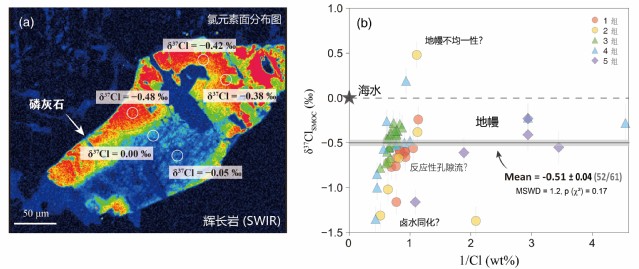Naixiao Xu1,2, Hao Cheng1, Geoffrey D. Bromiley2, Henry J.B. Dick1, and Lingmin Zhang1
1 State Key Laboratory of Marine Geology, Tongji University, Shanghai, China
2 School of GeoSciences, Grant Institute, University of Edinburgh, Edinburgh EH9 3FE, UK
Abstract: The extent of chlorine isotope heterogeneity within Earth’s mantle remains a subject of active debate. To contribute to this discussion, we present the first in situ chlorine isotope measurements of apatite from Integrated Ocean Drilling Program Hole U1473A (Southwest Indian Ridge) gabbros. The apatites record a pristine mantle δ37Cl value of -0.51‰ ± 0.04‰, consistent with global mid-ocean ridge basalt averages. Systematic negative covariations between δ37Cl and Cl content across lithological boundaries cannot be explained by fractional crystallization alone. Compared to altered gabbros from Ocean Drilling Program Hole 735B (Atlantis Bank), apatites from U1473A show lower δ37Cl values. The preservation of euhedral textures and constant OH concentrations in these apatites, combined with amphibole geochemistry, rules out lower-temperature seawater alteration. Instead, these trends reflect high-temperature processes, including melt-rock interaction, brine assimilation, or mantle heterogeneity. Our findings demonstrate that δ37Cl variability in mantle-derived apatites records both crustal recycling and intrinsic mantle heterogeneity, confirming their utility as reliable tracers of deep Earth volatile cycling.
Full article:https://doi.org/10.1130/G53563.1



